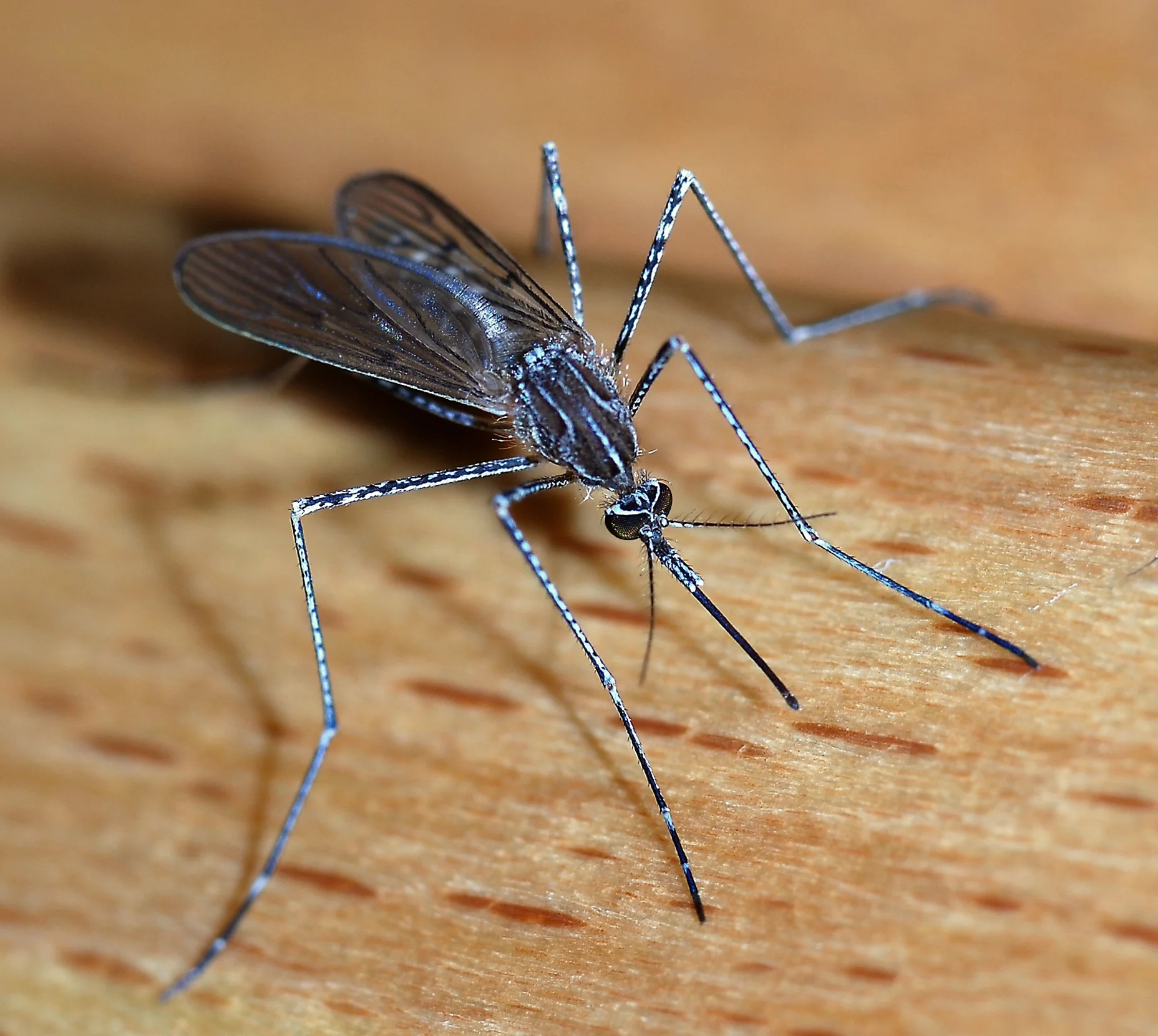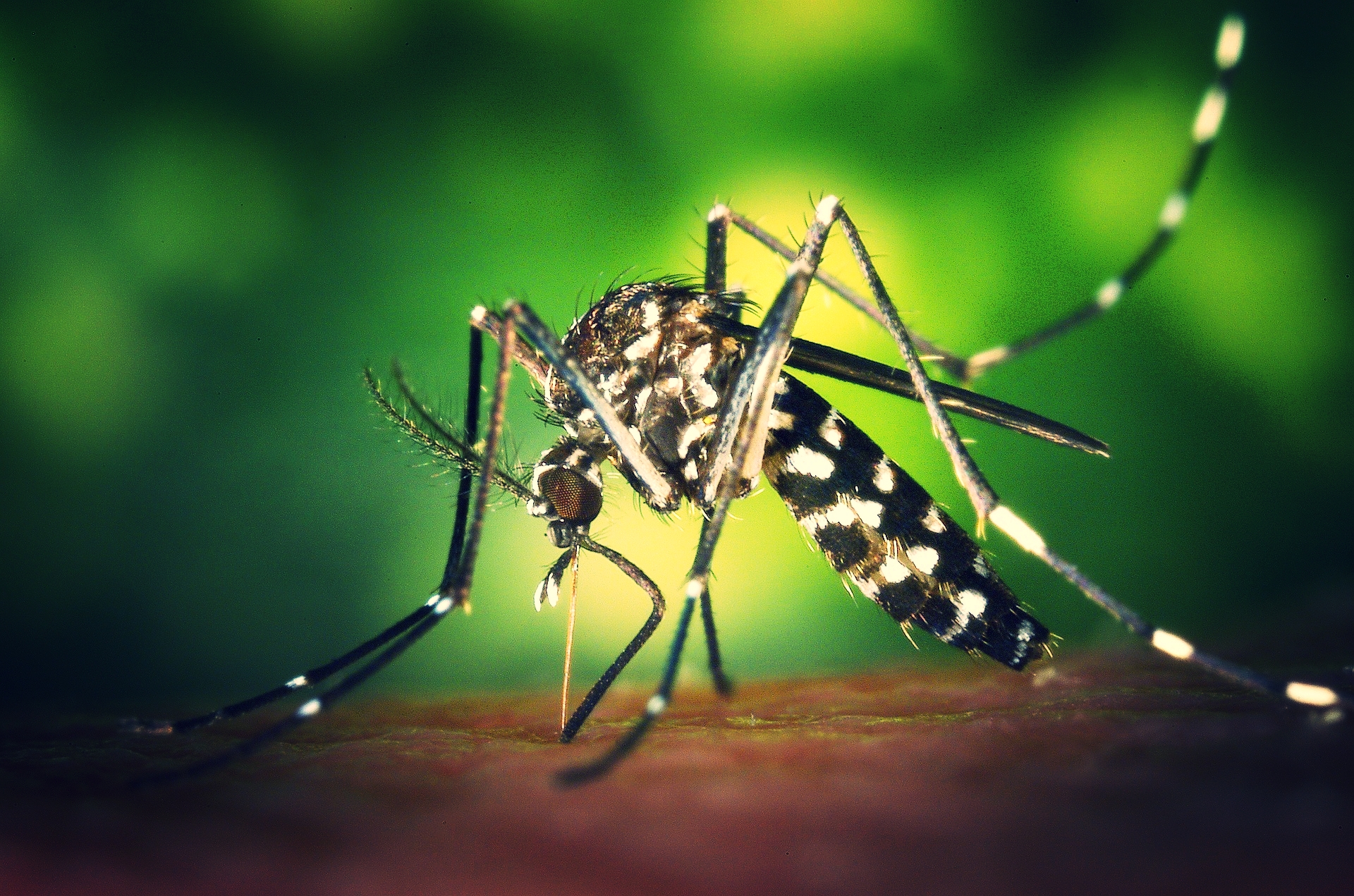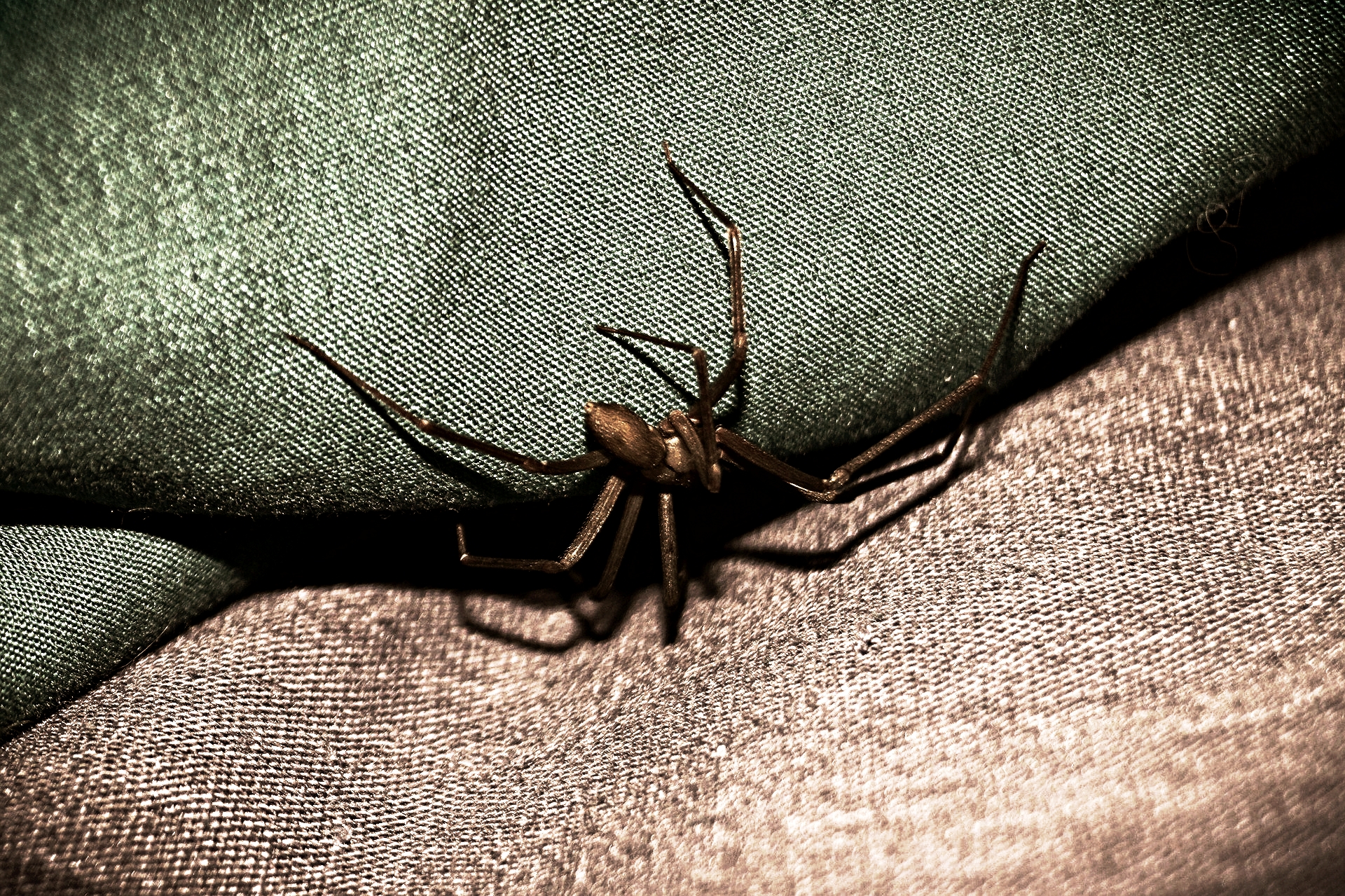Preventing Mosquitos in the backyard and other outside living areas can be a daunting task for most of us. In fact, more often than not it seems to be a losing battle. But, we never give up! There are several ways to approach the battle against mosquito populations.
Tiger Mosquito
Mosquito control must be performed at different levels and, once you understand where mosquitos breed, live, and rest it is only then you can begin controlling populations effectively.
STANDING WATER
Uncirculated water, ponds, fountains, retention ponds, birdbaths, and old tires.
With all the rain in recent months, standing water can easily accumulate in low areas of your lawn, under decks and even patios. Water may collect under trash cans, potted plants and other areas of likeness. Mosquitos will breed in these areas and their larvae can be seen swimming about in no more than a bottle cap-size amount of water. If these areas weren't enough of a concern lets move on and consider smaller known breeding sites for mosquitos around the house.
MOIST CONDITIONS
Tree wells, tree holes, flowerbeds, plant containers, decorative pots, sprinklers.
If it wasn't enough to go in search of wet areas around your house, you cannot overlook moist areas where water is not pooled. Soil retains moisture at the base of plants and low areas in the lawn may contain the right amount of moisture for mosquito breeding even if you see no standing water. Mosquitos are most active at dawn and dusk to avoid direct sunlight. Yes, sometimes you may find one in direct sunlight but, for the perfect conditions, they prefer shade and these are the areas needing special attention when it comes to control and elimination.
RESTING AREAS
Any surface out of direct sun and wind is a perfect location for mosquitos to rest.
When it comes to the DIY mosquito slayer, there are several things to consider before having at it in the backyard. First, be sure to seek out all areas mentioned above. Secondly, you must consider other methods of control. There are multiple ways to control mosquitos. By eliminating harborage sites you have already increased your success. It's important to remember that if your neighbor, nearby structure or, natural area close by has any of these harborage sites you will still get mosquitos. If you have sought out and eliminated every possible harborage site for mosquitos on your property and still find yourself and family getting bitten you must begin accessing other control methods like citronella candles, netting, traps, and repellants.
Controlling mosquitos successfully is a multi-fold process where you must incorporate more than one method and this should be left up to professionals like Gladhill Services but, if you feel froggy and want to dive into this murky water on your own then, here's how to do it.
TRAPS
It doesn't take much to knock a mosquito out of the way or even push them back but if choosing this route be aware that if you use netting or repellant methods you are only pushing them back temporarily. Mosquito traps work in the same as you are now relying on the traps to lure them in to be caught. Traps do not eliminate mosquitos but, simply entice them to come closer and become contained within the trap. You may end up bringing more mosquitos than you had to begin with as many traps emit a bait for mosquitos.
NETS
Mosquito netting is good stuff simply because they keep mosquitos away from you immediately. Nets can be wrapped or set up around the area you wish to enjoy. Some are cheap and some get costly but they do work. Again, there is no effective control for mosquitos using a net - you are not eliminating them, just keeping them away from you. It's been noticed that large populations of mosquitos may be seen accumulating on the outside of nets as they wait for you to exit. To avoid this you can spray the net with a DEET-based repellant before entering.
REPELLANTS
The common name DEET. Every grocery store, pharmacy and camping supply company sells Off and it works. By using these products on your clothing and gear, mosquitos avoid getting to close to you. Again, use them according to their labels and reapply as needed when outdoors. Just remember that these products typically have no residual meaning once you spray them they do not last.
The battle against mosquitos is all about finding balance in all things natural so start by eliminating standing water and moisture around your home then put up a net to get immediate protection. Apply an insect repellant like Off if needed to offer further protection from getting bit.
If your mosquito problem doesn't get better then give us a call at 717-597-1040 so Gladhill Services can help improve your mosquito problem professionally.











